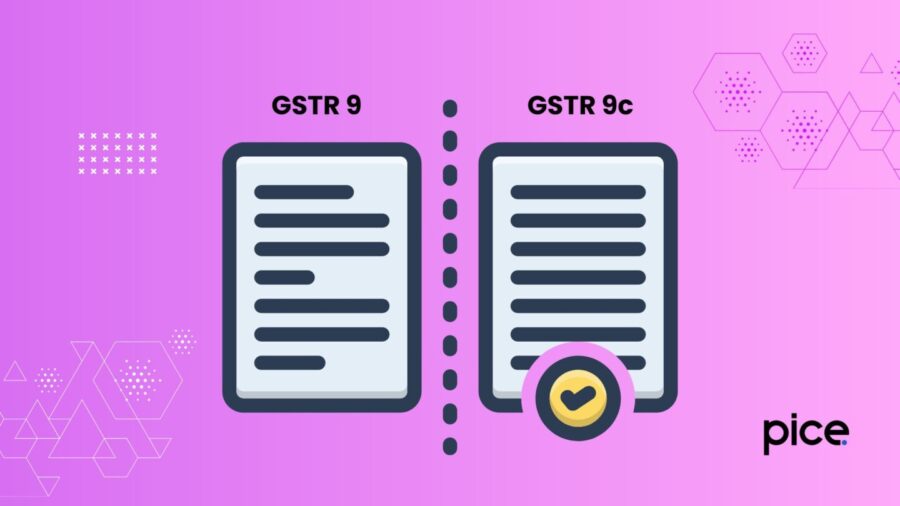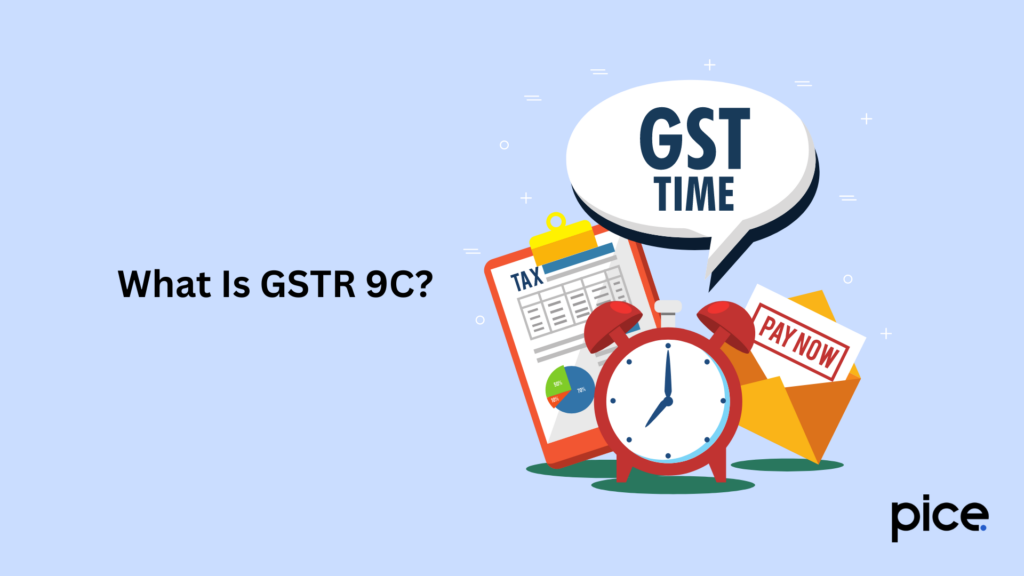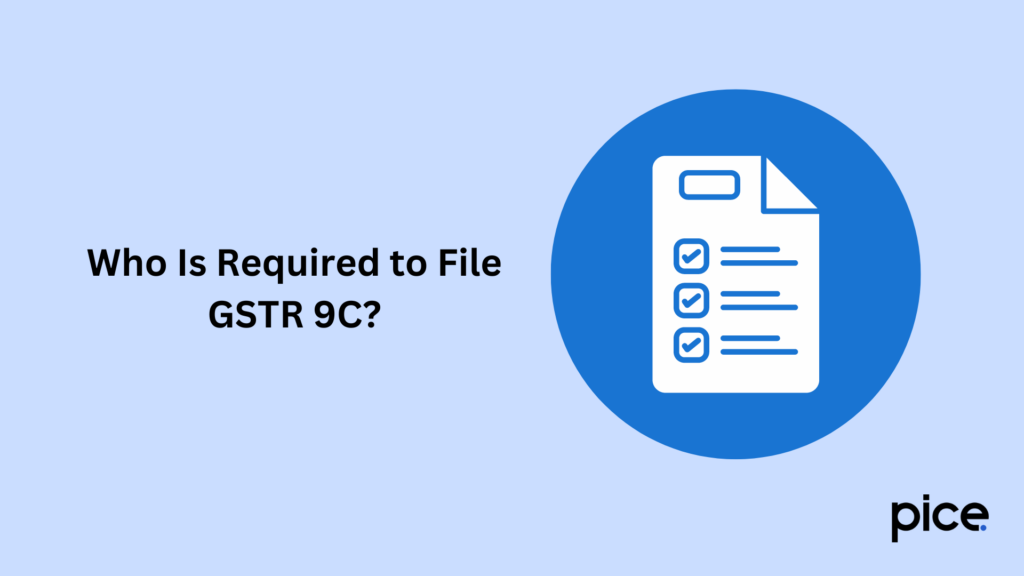Difference between GSTR 9 and GSTR 9C
- 5 Sep 24
- 7 mins

Difference between GSTR 9 and GSTR 9C
Key Takeaways
- GSTR-9 is the annual return summarizing a taxpayer’s inward and outward supplies, ITC, and tax liabilities for a financial year.
- GSTR-9C is a reconciliation statement comparing GSTR-9 with audited financial statements, mandatory for taxpayers with a turnover exceeding ₹2 crore.
- The due date for both GSTR-9 and GSTR-9C is 31st December of the year following the relevant financial year.
- Exemptions: Taxpayers with turnover under ₹2 crore and certain non-resident service providers are exempt from filing GSTR-9 and GSTR-9C.
- Streamlined compliance: Understanding the differences between GSTR-9 and GSTR-9C helps taxpayers manage GST obligations effectively.
GSTR-9 and GSTR-9C are two important annual returns under the Goods and Services Tax regime. These forms ensure GST compliance and transparency in reporting. The Form GSTR-9 is the annual return, which contains details of inward and outward supplies, input tax credits and tax liabilities for a relevant financial year.
On the other hand, taxpayers with a turnover greater than 2 crore must file Form GSTR-9C, a statement of reconciliation.
In this blog, we will discuss the difference between GSTR-9 and GSTR-9C, their meanings, due dates and more.
What Is GSTR 9?
Registered regular taxpayers, including Special Unit Zone (SEZ) units and developers, are required to submit Form GSTR-9 once a year. This return contains details of sales, purchases, optimized ITC data, claimed refund, etc.
GSTR-9 is a combination of all the prevalent monthly or quarterly returns, such as GSTR-1, GSTR-3B, etc. that are filed in the present financial year. This return helps prevent data discrepancies and ensures accurate disclosures.
What Is GSTR 9C?

Form GSTR-9C is, precisely, a reconciliation statement of the yearly returns filed in GSTR-9 and the audited yearly financial statements of applicable taxpayers. It contains details of the taxable and aggregate turnover of taxpayers, adjusted with the consolidated numbers and the gap between them.
GSTR-9C is an audit form. It is essentially filed to report any existing difference, after verifying GST returns in GSTR-9 and the audited statements of taxpayers for a particular financial year.
Contents and Format of GSTR-9
The format of the GSTR-9 Form is as follows:
- Part I: Details like company name, GST number, and financial year
- Part II: Details like inward supplies, such as purchases and outward supplies, such as sales, transfers, etc.
- Part III: Details about Input Tax Credit for the concerned financial year
- Part IV: Tax payment details recorded in the returns filed throughout the financial year
- Part V: Transaction details for the previous year, which is to be included in the returns for the following financial year.
- Part VI: Details like a declaration of refund, demand created, late fee payable, goods sent on an approval basis, etc.
Contents and Format of GSTR-9C
Here are the content details and a detailed structure of GSTR-9C:
Form GSTR-9C is divided into 2 sections: Part A (Reconciliation Statement) and Part B (Auditor Certification).
Part A– Reconciliation Statement:
The GSTR-9C reconciliation statement consists of 5 parts:
- Basic Details
Part 1 is further divided into four parts:
- Taxpayer’s Goods and Services Tax Identification Number (GSTIN)
- Trade name and legal name of registered person
- Fiscal year
- Eligibility of the person for audit
- Reconciliation of Turnover
Part 2– the Reconciliation of Turnover consists of the turnover that is recorded in Form GSTR-9 or the taxpayer's financial statement (audited).
- Reconciliation of Tax Paid
Part 3 contains the combination of the tax liability and outstanding amount, as per rates.
- Reconciliation of Input Tax Credits
Part 4 is a reconciliation of the ITC amount in the annual return and net ITC according to the books of accounts.
- Additional Tax Liability due to Non-Reconciliation
Part 5 comprises the recommendations that an auditor provides to a taxpayer concerning non-reconciliation of ITC.
Part B– Auditor Certification
Auditor certification is a certificate that a chartered accountant files after auditing Form GSTR-9. The two sections are:
- Based on the audit by the auditor-in-charge
- Certification in cases where GSTR-9C was drawn out by the entrusted auditor
Who Is Required to File GSTR 9?
All taxpayers under GST need to file GSTR-9 Return, except these categories of person:
- Casual taxpayers
- Non-resident taxpayers
- A person who is collecting TCS under Section 52 of the CGST Act
- A person who is paying TDS under Section 51 of the CGST Act
- Composition taxpayers
Who Is Required to File GSTR 9C?

All registered taxpayers who have a turnover of more than ₹2 crores need to file Form GSTR-9C on the official GST portal. This includes both the parts of the Form– reconciliation statement and auditor certification.
It is important to remember that although an auditor's certification was necessary previously, self-certification by an authorised person is sufficient now.
What Is the GSTR 9 Due Date?
For a financial year, the Form GSTR-9 submission deadline is 31st December of the year following the concerned FY. This implies, for the Financial year 2023-2024, you need to file GSTR-9 by 31st December 2024. A person will be liable to a maximum penalty of ₹200 daily if a registered person fails to file this form.
GSTR 9 and GSTR 9C Exemptions
\As per the 53rd GST Council, taxpayers whose annual turnover is less than ₹2 crore do not need to file GSTR-9 and GSTR-9C. These relaxations attempt to decrease the tax burden on small taxpayers and enable seamless business compliance.
Additionally, if an individual is a non-resident and provides Online Information Database Access and Retrieval Services (OIDAR) to unregistered persons in India, he will be eligible for GSTR-9 and GSTR-9C exemptions.
Conclusion
While Form GSTR-9 is a summary of a person’s annual financial transactions, Form GSTR-9C functions as audit reporting. By being aware of the difference between GSTR-9 and GSTR-9C, taxpayers will be able to effectively manage the tax complexities, streamline the GST return filing process and adhere to GST regulations.
💡If you want to pay your GST with Credit Card, then download Pice Business Payment App. Pice is the one stop app for paying all your business expenses.
 By
By 
















